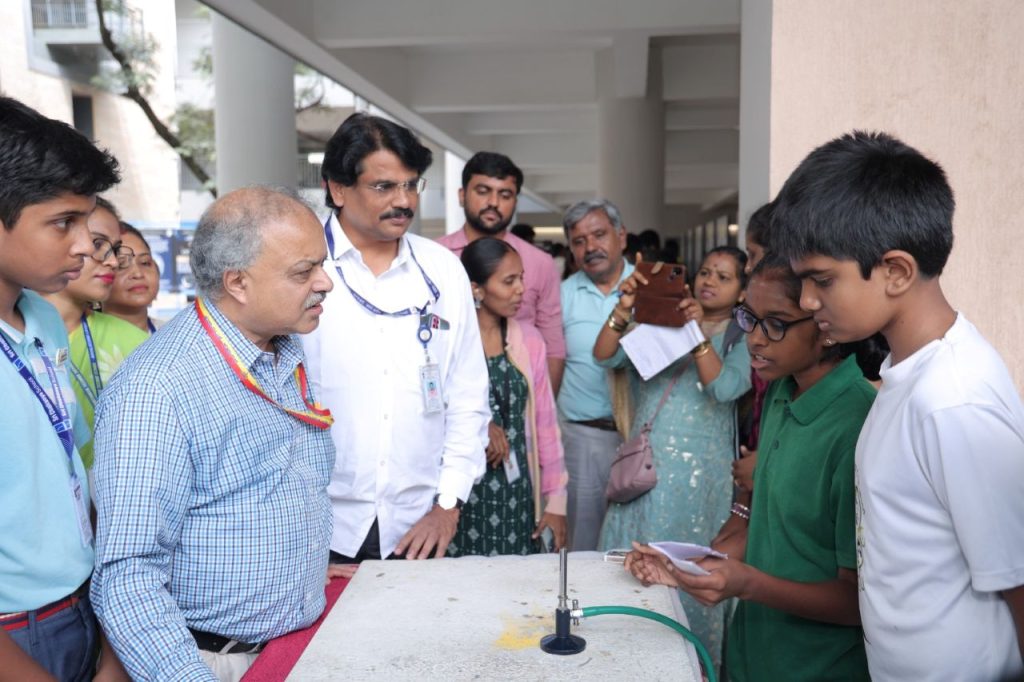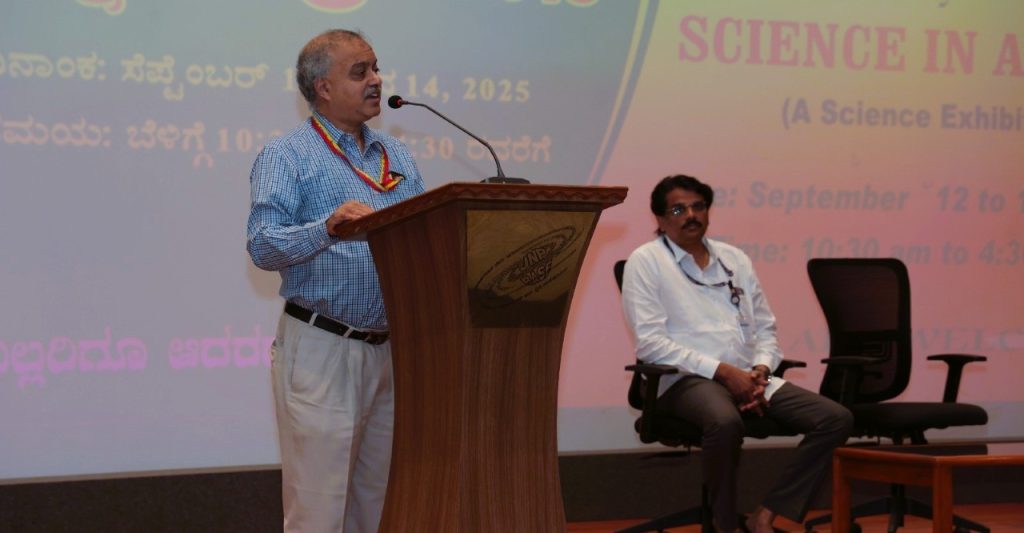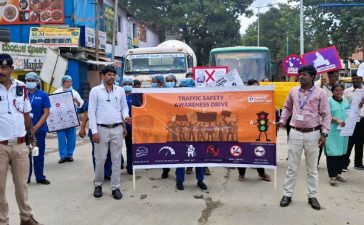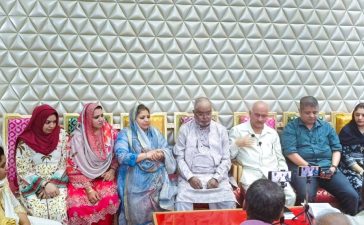Students Showcase Innovation at ‘Science in Action’ Exhibition in Bengaluru
Jawaharlal Nehru Planetarium hosts bi-annual event to inspire STEM learning
Bengaluru, September 12, 2025 – The Jawaharlal Nehru Planetarium (JNP), in collaboration with the Bangalore Association for Science Education, inaugurated its three-day bi-annual Science in Action exhibition on Friday. The event, held at UR Rao Bhavana on the JNP campus, brought together young science enthusiasts from across Bengaluru and nearby districts to demonstrate their creativity and curiosity through hands-on experiments.
The exhibition was inaugurated by senior ISRO scientist Srinath Ratnakumar, who emphasized the importance of nurturing curiosity among students. “To become good scientists, students must work hard, develop experiments, and take science seriously,” he said, while encouraging teachers to continue inspiring the next generation.
Showcasing 26 Experiments in Physics, Chemistry and Mathematics
This year’s edition features 80 students from seven schools, including Future Citizens of India, Siddhartha International School, Cathedral PU College, NMH Global School (Bengaluru), and Royal School and Dolphin International School (Chikkaballapura). Together, they presented 26 innovative experiments covering fundamental concepts in physics, chemistry, and mathematics.
Among the most engaging demonstrations were the Magnetic Pendulum That Doesn’t Rest, Japan’s Bullet Train Model, Iodine Finger Printing, Carbon Dioxide Supports Combustion, Fluorescence of Vitamin B2, Gymnastic Nails, and experiments on Surface Tension and Total Internal Reflection. Visitors witnessed how everyday scientific principles can be applied in creative ways.
Dr. V. R. Guruprasad, Director of JNP and a former ISRO scientist, said the program was designed to make science learning interactive and fun. “Merely studying in school is not enough. Students must experiment and participate in such programs to build confidence and prepare for life’s challenges,” he explained.

Hands-On Science for a Brighter Future
The exhibition drew more than 600 students, teachers, and visitors on its opening day. With free entry, the event is open to the public until September 14, between 10:30 am and 4:30 pm.
Dr. Guruprasad underscored the broader purpose of the initiative. “Science is at the heart of everything around us – from computers and medical equipment to space exploration. India’s progress depends on today’s students, who must be well-prepared to take the country to greater heights in science and technology,” he said.
He also highlighted that while the current experiments focus on foundational concepts, future editions may explore advanced themes such as artificial intelligence and machine learning, targeted at older students.

Inspiring the Next Generation
The Science in Action exhibition has been held twice a year, typically in September and November, for over a decade. Its mission is to spark interest in STEM education and nurture innovation from a young age. The event’s inclusivity ensures that schools of varied backgrounds get an opportunity to participate.
“Our committee ensures that even schools with limitations are given opportunities,” Dr. Guruprasad noted. “This way, no child’s potential fades away.”
Media Updates: +91-93531 21474 [WhatsApp] | indianowme@gmail.com
💬 Key Quotes
-
Srinath Ratnakumar, ISRO Scientist:
“To become good scientists, students must work hard, develop experiments, and take science seriously.” -
Dr. V. R. Guruprasad, Director, JNP:
“Merely studying in school is not enough. Students must experiment and participate in such programs to build confidence and prepare for life’s challenges.” -
Dr. Guruprasad on inclusivity:
“Our committee ensures that even schools with limitations are given opportunities. This way, no child’s potential fades away.” -
Dr. Guruprasad on future scope:
“While current experiments focus on basics, advanced topics like AI and machine learning will be introduced at higher educational levels.”
❓ 10 Important Q&A
Q1: What is the ‘Science in Action’ exhibition?
A hands-on science fair organized bi-annually by the Jawaharlal Nehru Planetarium, showcasing experiments in physics, chemistry, and mathematics.
Q2: Where and when is it held?
At UR Rao Bhavana, Jawaharlal Nehru Planetarium, Bengaluru. This edition runs from September 12–14, 2025.
Q3: Who inaugurated the event?
Senior ISRO scientist Srinath Ratnakumar.
Q4: How many students and schools participated?
Around 80 students from seven schools across Bengaluru and Chikkaballapura.
Q5: What kinds of experiments were presented?
26 demonstrations including Magnetic Pendulum, Japan’s Bullet Train, Iodine Finger Printing, and experiments on Total Internal Reflection, Surface Tension, and Chemical Reactions.
Q6: What is the main aim of the exhibition?
To inspire students towards STEM education and encourage hands-on learning beyond textbooks.
Q7: How many visitors attended on the first day?
More than 600 students, teachers, and members of the public.
Q8: Is there an entry fee?
No, entry is free for all visitors.
Q9: How often is the event conducted?
Twice a year, typically in September and November/December.
Q10: What future topics may be included?
Advanced areas such as artificial intelligence and machine learning for older students.
![]()











